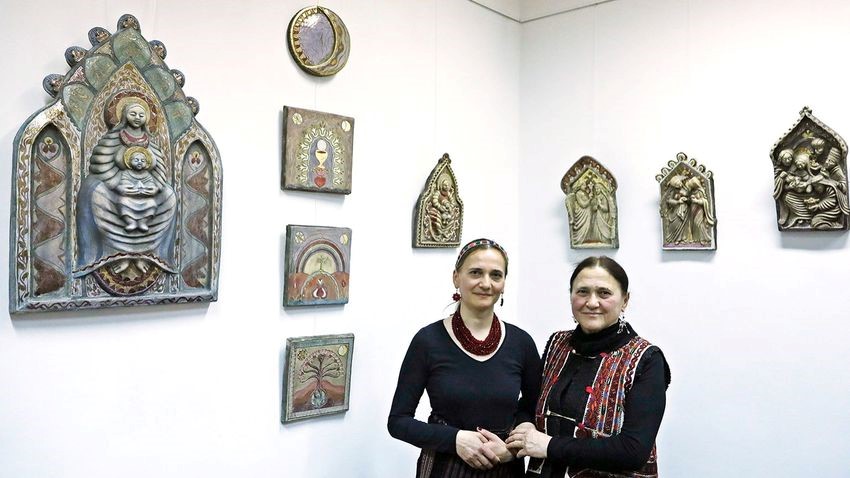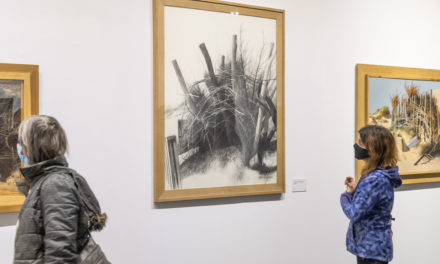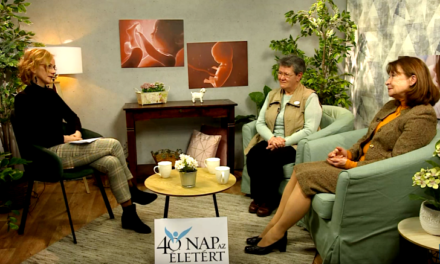About sixty eye-catching works of art can be seen at the exhibition of Mária Petrás Prima Primissima and Hungarian Heritage Award-winning ceramic artist, folk singer, full member of the Hungarian Academy of Arts, and her daughter, Jenő Prize-winning ceramic artist and folk singer Petrás Alina Szervátiusz, in the Teleki-Wattay Castle in Pomáz . The reliefs and sculptures of Mária Petrás with sacred themes and the works of Alina Petrás animating natural elements bring the distant Csangó region and its spirit closer to the visitors.
Mária Petrás came from Moldavia, from the ancient culture of the Csangó community, to Hungary in 1990 with her two children. They have lived in Pomáz for twenty-one years, where they work in their own studio together with their daughter. The artist spoke lovingly about his home, where they can live in a natural environment, and from the window of their house they can see the lankas of Csobánka. The ceramic artist who created a unique world of forms and documented the Moldavian Csangó-Hungarian culture primarily produces figurative ceramics. The prayers and songs of the villages of Csangó come to life in his reliefs and sculptures with a sacred theme. His works interwoven with folk art motifs radiate intimacy. His ceramics convey a unique, ancient message that cannot be compared to anyone else's work. The stunningly beautiful ceramics depict Babba Mária, biblical events, and Hungarian saints. In addition to ceramics, we can also see his works made of glass at the exhibition. The ceramist found glass when modeling and shaping the figures of various saints, because he considers it a refined material. The lovely simplicity of the unique shape and color world enchants those who wish to immerse themselves in art and spiritual devotion. "It was a clean world, the proportions were beautiful," said Mária Petrás earlier.
Adrienn Bényei's full article in Magyar Nemzet .
Featured image: Máté Bach












